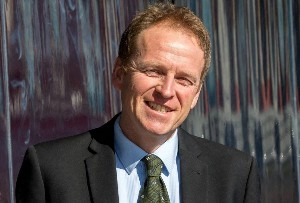
by Sally Lindsay

In an economic note, it anticipates the average debt servicing cost facing households will peak at about 6.2% in the middle of this year, 340 bps above 2021 lows. Compared to 2021, this will add slightly more than $100 per week of costs for each household – an extra $12 billion per year – to nationwide household debt servicing.
About 90% of this tightening has been experienced so far, Mark Smith, ASB senior economist says.
Household debt is sizable. RBNZ figures place the stock of household debt in the region of $368b or about 165% of household disposable incomes and slightly more than 90% of nominal GDP.
This equates to about $185k for each private dwelling, of which more than 95% is mortgage debt.
Household debt to income is now easing as the 3% annual growth in household borrowing has fallen below the growth in household incomes.
However, debt servicing has ratcheted up as borrowing costs have increased.
The ASB expects the OCR to drop from the second half of next year, but even if that happens, Smith says mortgage fixing means that declines for overall borrowing costs will be slow to recede.
The 250 bps of OCR cuts we expect by the end of 2025 compares to about a 90 bps fall in borrowing costs from the peak in the middle of this year, leaving the latter still about 250 bps above 2021 lows.
“It is our view that higher borrowing costs and stretched affordability are the major counterweights preventing the housing market going ballistic despite record net immigration.
“These factors should limit the pick-up in house prices we expect this year,” he says.
Mortgage interest rates for new borrowers are expected to steadily decline this year and into 2025.
Despite this, new mortgage interest rates are unlikely to decline as swiftly or as substantively as they have risen given that deposit rates – that constitute a sizable chunk of mortgage funding – have yet to drop.
There is an interest rate pipeline, where borrowers who fixed at earlier low rates will find that their cost of funding will be higher when they refinance.
As about 90% of mortgages are fixed, movements in the average interest rate paid by household borrowers have not yet moved to the same extent.
Smith says the bank’s estimates suggest about 20% of mortgage debt is either variable or rolls off each month, with about 60% having to be refinanced within six months, 80% within a year and more than 95% within two years.
“Our forecasts suggest the average interest rate on mortgage borrowing should peak at about 6.2% by the middle of this year, a shade lower than the RBNZ’s November MPS forecasts of 6.4%.” This is about a 340 bps climb since September 2021 lows.
Smith says the pending readiness of debt-to-income (DTI) limits on household borrowing will add to the RBNZ’s toolkit.
“In the existing juncture of high debt-servicing costs, a DTI tool will likely have modest impacts on household credit growth, the housing market and inflation.”
He says, however, circumstances can change quickly, and the DTIs (and other tools) will become more effective in containing household borrowing and stopping the housing market from taking off as the OCR is lowered.
| « Expect more economic carnage | SME FAP challenges can be overcome » |
Special Offers
No comments yet
Sign In to add your comment

© Copyright 1997-2024 Tarawera Publishing Ltd. All Rights Reserved